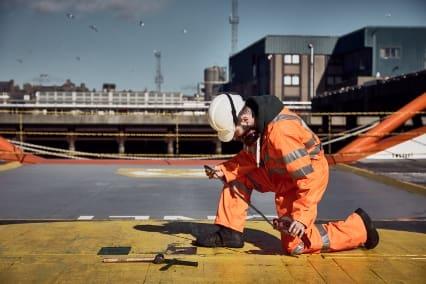What is Respirable Dust?
Respirable dust, as defined by the World Health Organization (WHO), are particles measuring 10 micrometers or less in size that can be inhaled into the nose or mouth. Compared to other forms of dust, these particles are incredibly small—almost invisible to the naked eye—that they stay airborne longer and can penetrate deep into the bronchioles of the lungs.
Why is it a Hazard?
Dust inhalation, in general, causes bothersome effects like coughing, sneezing, shortness of breath, and asthma attacks for individuals allergic to it. Breathing in respirable dust poses more danger because the particles, as aforementioned, can reach the lungs and stay there. This can lead to chronic health issues which are difficult or impossible to treat.
- Chronic Obstructive Pulmonary Disease (COPD) – This refers to different kinds of diseases that cause blockage in the airways. Many studies show that the risk of COPD is 1.5 times higher for those who inhale dust at the workplace.
- Pulmonary Fibrosis (PF) – Here, the lung tissue thickens and stiffens, making it harder for the lungs to work properly. With no cure available at the moment, patients diagnosed with PF have an average survival of three to five years.
- Pneumoconiosis – This is possibly the most common and life-threatening consequence of respirable dust inhalation. This restrictive disease causes irreparable scarring in the lungs. The specific types of this disease are silicosis, asbestosis, and talcosis.
- Cancer – The entry of any foreign object into the lungs may cause abnormal cell growth. The Cancer Council of Australia reported up to 230 cases of silicosis progressing to cancer every year.
- Heart Disease – Inhalation of respirable dust also causes the heart to pump harder to help the weakened lungs get more oxygen. The continuous, additional effort may lead to heart failure.
Industries Affected
According to the Centers for Disease Control and Prevention (CDC), millions of workers in the United States are exposed to this danger. The industries considered to be high-risk are:
- Construction and demolition
- Mining and quarrying
- Stone masonry and fabrication
- Foundries
- Oil and gas extraction
- Manufacturing (glass, metal casting, paint, etc.)
Although respirable dust is an occupational hazard in the industries mentioned above, the general public should still take necessary precautions when undertaking similar, albeit less complicated, work at home, such as DIY construction projects.
This is because silica, possibly the most common respirable particle, is everywhere. In fact, almost all construction materials, including stone, cement, and ceramic, contain this compound. Cutting, grinding, drilling, sanding, and chipping cause the crystalline silica dust to become airborne. This is sure to be inhaled by anyone nearby, especially when protective measures are not in place.
Managing Respirable Dust in the Workplace
Because the health hazards are much too grave, the WHO has set standards to aid in controlling the problem and reducing its subsequent health effects. The Occupational Safety and Health Administration (OSHA) is the agency responsible for creating regulations that forward WHO’s aim in the United States. Here are some measures that can help:
Recognize the Problem
The first step is to do an initial assessment to determine the following:
- Type of dust
- Specific components of the dust
- Amount of the particle in a particular space
- Cause of the spread
This walk-through will provide salient information that can help managers in the workplace formulate specific control systems and safety procedures for their people.
Strategize Control Systems
It is always best to uphold occupational health and safety for prevention than solve an existing problem. With the information gathered during the initial sampling, the following measures can be put in place:
- Elimination at the source
If it is possible to discontinue or change a step in the workflow to minimize contamination or exposure, do so.
- Containment and ventilation
If the first tactic is not feasible, containing the material in an enclosed space and/or adding more ventilations in the space may help control dust spread.
- Work practices
Certain methods may have to be improved before, during, and after exposure to the contaminants to minimize or eradicate direct exposure.
Depending on the nature of the work and level of exposure, workers must be equipped with complete protective gear. Protective equipment is often so restrictive and uncomfortable that workers are tempted to remove it. To prevent this from happening, education and training must be done so they understand the point of it all.
- Real-time monitoring
Aside from the respirable dust definition OSHA has in terms of the size of the particle, they also set a PEL (Permissible Exposure Limit) over an 8-hour working period. Installing gadgets that measure quality will be very helpful. Also, setting up cameras in stations can help ensure that workers adhere to company guidelines.
Continuous Health Monitoring
The signs and symptoms of pneumoconiosis and other diseases caused by respirable dust inhalation take years, even decades, to develop. Thus, regular health checks like X-rays or CT scans must be done to see if there are health problems due to exposure.
SafetyCulture for Managing Respirable Dust
Eliminate manual tasks and streamline your operations.
Get started for FREEFAQs about Respirable Dust
Inhalable dust measures 100 microns in diameter and can be filtered in the upper airway (nose and throat). Respirable dust is much smaller at 10 microns and can go straight to and settle in the lungs.
Crystalline silica, the most common type of respirable dust, is found in almost all construction materials. Millions of tiny particles are airborne while cutting, grinding, or sanding stone, brick, concrete, ceramic, and glass,
The American Conference of Governmental Industrial Hygienists (ACGIH) recommends a limit of 3mg/m3 in respirable dust airborne concentration. In addition, OSHA states that the PEL for respirable dust should not go over 5.0 mg/m3 during an 8-hour work period.
Silica is found everywhere. If you’re about to start any DIY project at home that involves cutting, sanding, or grinding surfaces, make sure to use protective gear like face masks, goggles, and gloves.
Dry sweeping or wiping surfaces can spread dust in the air rather than contain it. Wet sweeping or wiping is a better method of cleaning up at home and in the workplace.




